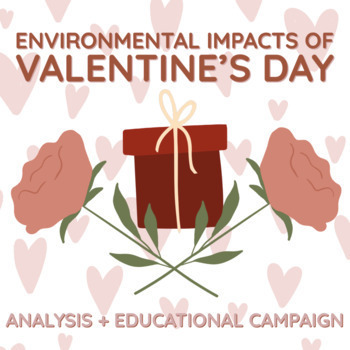Environmental Impacts of Valentine's Day (Analysis + Educational Campaign)
- Google Docs™

Description
Say "I love you" to Mother Earth this Valentine's Day with an environmental impact analysis of the holiday!
This activity allows students to investigate five different negative impacts of Valentine's Day on the environment, then utilize their creativity skills and new knowledge to launch an educational campaign to raise awareness and suggest solutions on one issue of their choosing. Discover how various Valentine's Day traditions affect the environment. Students will read about five different environmental impacts of Valentine's Day and answer reading comprehension questions. Each environmental impact includes a short reading, a visual aid (infographic, picture, or video), and two or three analysis questions. Students will then select one issue and create a poster alerting the public to the issue and providing a creative solution.
Your students will analyze:
- Valentine's Day Cards
- Roses
- Chocolate
- Material Gifts
- Diamonds
This lesson can be taught synchronously or asynchronously, online or in person. This assignment can be given for students to complete independently, in groups, or as a jigsaw by assigning one topic per team and then allowing teams to share their learnings with classmates. Students can present their final products through formal presentations or a gallery walk. This activity can be used with students ranging from middle school through high school and is designed to last one to two class periods. This lesson works great for any science course or class looking to practice applied analytical reading and writing skills.
For more seasonal resources, check out EnvironmentLA's holiday lessons!




